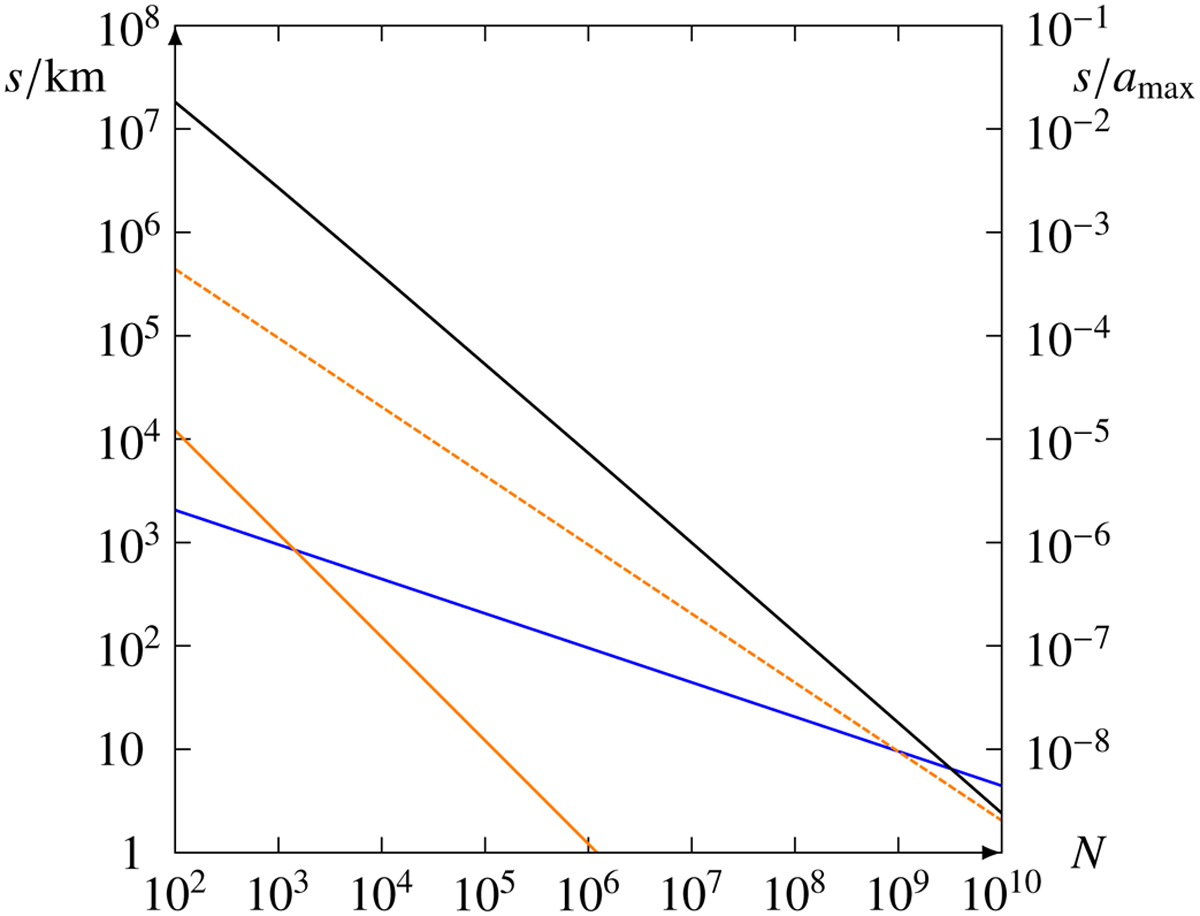Fig. 7

Download original image
Particle radius s vs. particle count N for a disk system with I ≤.1 and a ≤ 4au. Above the black line, the numerical integration propagator with tree code for collision detection beats the analytic propagator using Kepler orbits (in terms of time efficiency). Precession due to a Jupiter has a small effect above the orange line, where Tcoll = Tprec, and has a negligible effect above the orange dashed line, aTcoll = sTprec. If the mass of three Earths is distributed over equal-sized planetoids (of Earth density), one is constrained to the blue line. On this line, precession is small for N > 103 but only attains the much smaller error of s per orbit for N > 109. Clearly, tree-code is better for these high number densities.
Current usage metrics show cumulative count of Article Views (full-text article views including HTML views, PDF and ePub downloads, according to the available data) and Abstracts Views on Vision4Press platform.
Data correspond to usage on the plateform after 2015. The current usage metrics is available 48-96 hours after online publication and is updated daily on week days.
Initial download of the metrics may take a while.


